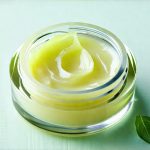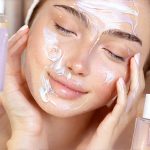Are Bladder Irritants Hiding in Your Skincare Products?
Many people experience frustrating bladder issues – frequent urination, urgency, even incontinence. While often attributed to aging, dietary choices, or underlying medical conditions, a surprising culprit may be lurking where you least expect it: your skincare routine. We diligently apply creams, lotions, and serums believing we’re nurturing our skin, but the ingredients within these products can sometimes inadvertently trigger or exacerbate bladder problems for sensitive individuals. This isn’t about eliminating self-care; it’s about becoming informed consumers and understanding how seemingly innocuous substances could be impacting a vital part of your wellbeing.
The connection between skincare and bladder health stems from transdermal absorption. Skin, while protective, isn’t an impermeable barrier. Certain ingredients can penetrate the skin layers and enter the bloodstream, eventually reaching the kidneys and bladder. For those with pre-existing sensitivities or conditions like Interstitial Cystitis (IC), also known as painful bladder syndrome, even small amounts of irritants can trigger symptoms. What’s more, many people aren’t aware they have a sensitivity until it’s activated by an unexpected source – like their favorite facial cream. This article will explore the common skincare ingredients that may pose a risk and empower you to make informed choices for both your skin and bladder health.
Common Culprits: Identifying Irritating Ingredients
The world of skincare ingredient lists can be daunting. Long, complex chemical names often leave consumers feeling lost and overwhelmed. However, understanding which categories are most likely to cause issues is a good starting point. Fragrances, preservatives, and certain botanical extracts are frequently identified as potential bladder irritants. Specifically, synthetic fragrances – those labeled simply as “fragrance” or “parfum” – are complex mixtures of chemicals that can vary widely between products and often contain hidden allergens and sensitizers. Preservatives like parabens (methylparaben, propylparaben) and formaldehyde-releasing preservatives (DMDM hydantoin, diazolidinyl urea) are added to prevent bacterial growth but have been linked to sensitivities in some individuals.
Botanical extracts aren’t automatically benign either. While natural doesn’t equal safe for everyone, certain plant compounds can be irritating. For example, citrus oils and mint family extracts (peppermint, spearmint) are known bladder irritants for many with IC. Even seemingly gentle ingredients like lavender or chamomile might cause issues in highly sensitive individuals due to their potential diuretic effects or the presence of allergenic components. The key takeaway here is that individual sensitivity plays a massive role. What bothers one person may not affect another, making pinpointing the trigger challenging but essential.
Finally, consider pH levels. Skin generally thrives at a slightly acidic pH (around 5.5). Products with excessively high or low pH can disrupt the skin’s natural barrier function, increasing permeability and potentially allowing more irritants to be absorbed. Look for products formulated specifically for sensitive skin that are pH-balanced. It’s also important to note that seemingly “safe” ingredients used in high concentrations could still cause issues – it’s not always about what is present but how much.
Decoding Ingredient Lists & Patch Testing
Navigating ingredient lists requires a bit of detective work. – Start by looking for the problematic categories mentioned above: fragrances, parabens, formaldehyde-releasing preservatives, and potentially irritating botanical extracts. – Be aware that “natural fragrance” doesn’t necessarily mean safe; it can still contain allergenic compounds. – Use online resources like the Environmental Working Group’s Skin Deep database (ewg.org/skindeep) to research individual ingredients and their potential health effects. This provides a risk assessment based on available scientific data.
However, relying solely on ingredient lists isn’t enough. Patch testing is crucial for identifying personal sensitivities. Here’s how to do it: 1. Choose a small area of skin (inner forearm or behind the ear are good options). 2. Apply a tiny amount of the product to this area. 3. Cover with a bandage and leave on for 24-72 hours. 4. Monitor for any signs of irritation – redness, itching, burning, or rash. If you experience any reaction, discontinue use immediately. This process should be repeated with each new skincare product before applying it to larger areas of your body.
It’s also important to remember that reactions can sometimes develop over time with continued exposure. You might not notice a problem initially but gradually become sensitive after weeks or months of using a product. Pay attention to any subtle changes in your bladder health whenever you introduce a new skincare item, even if the patch test appeared normal.
The Role of Product Formulation & Delivery Systems
The way a product is formulated – and how it delivers ingredients to the skin – can significantly impact its potential for irritation. For example, products with a high concentration of active ingredients or those designed for deep penetration (like anti-aging serums) are more likely to cause issues than gentle cleansers or moisturizers. Delivery systems such as liposomes or nanoemulsions aim to enhance ingredient absorption but could also inadvertently increase the amount of irritant that reaches the bloodstream.
Consider the product’s texture and consistency too. Thick, occlusive creams can create a barrier on the skin, potentially trapping irritants and increasing absorption. Lighter lotions or serums might be less problematic for sensitive individuals. Furthermore, products containing solvents like alcohol (ethanol, isopropyl alcohol) can dry out the skin, compromising its protective barrier function and making it more vulnerable to irritation.
Minimizing Risk & Building a Bladder-Friendly Routine
Building a bladder-friendly skincare routine isn’t about deprivation; it’s about mindful selection. – Opt for fragrance-free products whenever possible. – Choose products with minimal ingredient lists. The fewer ingredients, the lower the risk of encountering an irritant. – Look for pH-balanced formulations specifically designed for sensitive skin. – Avoid products containing parabens and formaldehyde-releasing preservatives. – Patch test every new product before full application.
If you suspect a skincare product is contributing to your bladder symptoms, consider an elimination diet – gradually removing potentially irritating products from your routine one at a time to see if there’s any improvement. Keep a detailed log of the products you use and any associated changes in your bladder health. Consulting with a dermatologist or healthcare provider can also provide personalized guidance based on your individual needs and sensitivities. Remember, taking proactive steps to understand your skin’s sensitivity and choosing products accordingly can make a significant difference in managing bladder health and overall wellbeing.





















